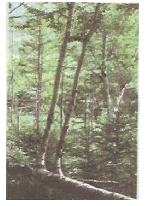Advertisements
Advertisements
Question
Give one example of a plant part which is positively hydrotropic as well as positively geotropic.
Solution
Roots are positively hydrotropic as well as positively geotropic.
APPEARS IN
RELATED QUESTIONS
What happens to the dandelion flower
- during the daytime, and
- at night?
What is this phenomenon known as?
The root of a plant grows downward. This is known as ______.
Name the plant organ which is negatively geotropic.
Why is the closing of a dandelion flower at dusk (when it gets dark) not a tropism?

A big tree falls in a forest but its roots are still in contact with the soil.
The branches of this fallen tree grow straight up (vertically). This happens in response to ______.
The climbing organs of plants like tendrils grow towards any support which they happen to touch and wind around the support. This is an example of :
(a) chemotropism
(b) nastic movement
(c) thigmotropism
(d) geotropism
The movement of a shoot towards light is:
Which of the following plant part exhibits negative phototropism?
(a) root
(b) branch
(c) leaves
(d) stem
While conducting experiments to study the effect of various stimuli on the plants, it was observed that the roots of a plant X grow and bend towards two stimuli A and B but bend away from a third stimulus C. The stem of the plant X, however, bends away from stimuli A and B but bends towards the stimulus C. The stimulus B is known to act on the roots due to too much weight of the earth. Keeping these points in mind, answer the following question:
- What could stimulus A be?
- Name the stimulus B.
- What could stimulus C be?
- The branches of a fallen tree in a forest grow straight up in response to two stimuli. What could be these two stimuli out of A, B and C? Also name these two stimuli.
Observe the three figures given below. Which of the following depicts tropic movements appropriately?
 |
 |
 |
| A | B | C |
